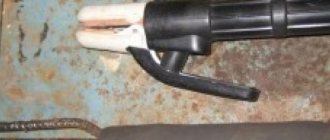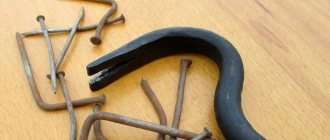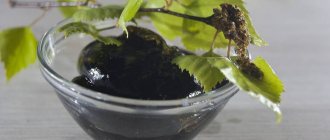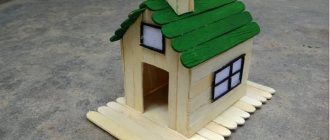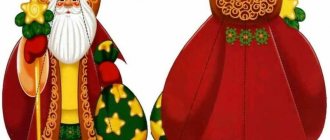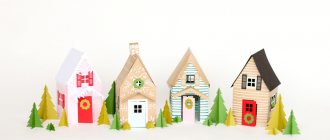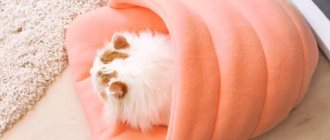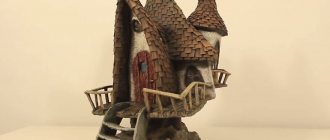Firstly, having a mixed hive for a variety of insects on the site corresponds to the mainstream, because the fashion for environmentalism has moved from residential premises to landscape design.
Secondly, many insects are very useful for the garden, flower beds and beds. They destroy small but voracious pests much more effectively than agricultural chemicals.
Finally, a house for the necessary boogers is a cute, unusual attribute that can decorate a site and become its highlight.
But, in fact, what kind of residents is this building designed for?
Which insects should be attracted to the site?
Honorary tenants in such “dormitories” are well-known ladybugs. They are reliable helpers in the fight against spider mites, aphids, mealybugs, whiteflies and scale insects.
Red seven-spotted ladybugs
True, it should be remembered that only one, the most common type of ladybird, deserves “registration” in the house - red seven-spotted ladybugs. And not only because these bright bugs are better at killing pests.
Remember the children's saying “ladybug, fly to the sky”? It has very ancient roots: the Slavs considered the speckled cow to be the messenger of the goddess of fertility; in many cultures, the scarlet bug with black spots is a living talisman, a symbol of good luck.
It’s also good to attract hoverflies to your site - flies that look like bees. Their larvae feed on aphids and even small caterpillars.
Turuns also feast on caterpillars; lacewings, which destroy aphids, will also be useful. And tiny Trichogramma are indispensable for protecting garden and vegetable crops from cutworms, moths, codling moths and cabbage whites.
And with the help of Trichogramma, almost 70 species (!) of gardening “saboteurs” are neutralized.
This is what Trichogramma looks like
Why do we need houses for beneficial insects?
The garden is filled with life by its invisible and largely underestimated inhabitants - birds, insects, various animals. If everyone takes care of attracting birds to the garden, feeding them and providing additional nutrition during the cold season, then insects are often forgotten. But these modest, useful helpers solve many problems in the garden. They not only pollinate plants, but also participate in the invisible fight against pests and even diseases. And beneficial insects should be attracted to the garden no less than butterflies or animals, even if you don’t think about collecting your own honey.
Read more about beneficial insects for the garden, their lifestyle and nutrition, in the material “Beneficial Insects in the Garden.”
In Europe, and throughout the world, they have long been loudly shouting about the problem of preserving bees, whose populations have declined catastrophically, and parks, gardens, and zoos are invariably equipped with houses for insects. In our country, almost no one has heard about the environmental disaster that is threatened by a reduction in the number of beneficial insects. Meanwhile, everyone can and should fight adversity. And for this there is only one way - to create special shelters - houses, which are called hotels for beneficial insects or simply hotels for beetles.
A house for beneficial insects made from scrap materials. © Yersinia
What to build a beetle abode from?
For the base, it is better to take a plywood box or an unnecessary wooden box. An old birdhouse equipped with a canopy will also work. Fillers serve as “rooms” in the house. For this purpose, planks and chips, dry branches, straw tufts, bark, cones, clay shards, moss and corrugated cardboard are used. And also necessarily hollow objects - reed tubes, bricks with holes, drilled logs.
House for insects
Aren't we harboring pests?
In principle, any insect can crawl into the house. But it’s hardly possible to settle down. Will pests be able to share shelter with their primordial enemies - predatory insects and parasitic insects? The outcome of such a neighborhood is probably a foregone conclusion... However, in this case I rely solely on the opinions of practitioners and specialists, which seem reasonable to me. The idea of insect hotels is also new to me :)) But I liked it, and I’m thinking of getting a similar hut - something, but there are plenty of pests in the garden, and it’s worth trying all means to combat them. And what do you think?
Principles of building a house for insects
The future “hotel” must be divided into sections so that each type of bugs and flies has its own “living space”.
The fillers are fastened together with glue so that they stick together without succumbing to shaking and gusts of wind. The surfaces inside should alternate with voids and crevices, one texture changing into another: wood into moss, moss into ceramics. This is both convenient for future settlers and looks beautiful from the outside.
The finished house is reinforced with wire or nails. Don’t forget also about a canopy that will cover the building from rain and snow - for this, a piece of plywood protruding beyond the edges is nailed on top.
To prevent the “new settlers” from becoming easy prey for birds, it is recommended to wrap the structure with a mesh with holes sufficient for large insects.
Finally, the building is attached to a stump, a fence, or an earthen mound. It is better to choose a place for it that is protected from drafts and sun, but open to view, because a neat, colorful house is a worthy decor for the site.
Remember that the “hotel” for insects can be of absolutely any shape, color, with any natural filling; You can involve children in its construction, show your artistic inclinations and architectural imagination.
What is an insect hotel?
This structure is usually made of wood, with compartments designed to accommodate different types of insects, with different needs and sizes. These "rooms" may contain pine cones, pieces of bark, reeds, perforated logs, clay blocks or bricks filled with soil and hay, bamboo canes... Each species has its own preferences when choosing a place to live.
An insect hotel can be made from almost any material, especially if you use recycled materials. Can vary the size and shape we want, from half a meter in height to more than two. The important thing is that the “rooms” are most suitable for each guest.
Rules for operating a “hostel” for insects
- The best time to install it is late spring.
- Different insects prefer different temperatures, so a smart option is to place the house where it will be sunny half the day and shady half.
- A “hotel” for bugs can also be built right in the wall - for example, in a niche or in a hole that formed in the fence after several bricks fell out.
- To complete the house, it is better not to use plastic tubes, as well as materials coated with paint or varnish. This filling will promote moisture retention and subsequently the development of fungus. For the same reason, fresh grass and leaves are not placed inside.
- In the hot summer, place a “pool” - a container of water - near the house.
- To attract bees, bumblebees, butterflies and other insects that feed on nectar to your new building, plant and sow different flowers nearby. Or place the house in the center of the flower bed.
- At the end of summer, do not forget to clean and repair the house. And also change fillers as necessary.
Many people will have a question: where is the confidence that beneficial insects will settle in the built “apartments”? Will pests get in there too?
Indeed, unwanted guests are also not allowed to enter the mini-house. But ideal conditions created for beneficial insects will very quickly increase their population, and any pest will not stay in the “hotel” for more than a few hours.
How to make such a house?
We will consider several options for building such houses.
Option 1
You will need:
- clay,
- straw,
- metal rod.
Mix clay with water and straw to make bricks or cube blocks from the mixture. While they are still wet, pierce them with a metal rod or tree branches, and let the bricks dry for a few days. Next, before everything is completely dry, remove the rods and rods. The remaining holes will be homes for bees.
Option 2
Take clay, corn or sunflower stalks, or other plants that have a hollow stem. These can be dill, trumpet weed stems, grape vines, raspberry stems, etc. Cut into 20-30cm lengths and tie the stems into a bundle. Make a “hotel” frame and secure these bundles in it. To make everything stick better and look beautiful, you can coat the bunches with clay.
Option 3
You will need a wooden box, open on one side, which you will attach to the sunny side of the fence or wall. Fill it with blocks of wood or small logs, in which you drill small holes of different diameters (usually 2-10mm, no more). The open ends of the holes should face outwards and be smooth, without nicks or splinters of wood. They can be cleaned with sandpaper or another method. You should also thoroughly clean the holes from sawdust. A variety of insects and solitary bees will use these tunnels as nests. The box should not be deeper than 20-30cm. It should have a roof with an overhang to protect it from rain. You can use old furniture as a drawer: a chest of drawers, a kitchen table, etc.
Place the insect house on the sunny side, facing south or southeast, at a height of about a meter from the ground. There should be no tall vegetation in front of it so as not to obscure the entrances to the tunnels. It is important that the sun has the opportunity to warm them in the first half of the day.
If houses are chosen by solitary wild bees, then it is important for them to leave an island of land so that they can use it to build their nests. They use it as a plaster to wall up the entrances to the house.
Option 4
Insect houses can be an excellent dining room for various birds, woodpeckers in particular. Therefore, it would be a good idea to protect your pets by securing a metal mesh in front of the entrance tunnels.
This project can be done with children. You will have fun and useful time together. There is a huge selection of different natural materials in the garden or forest. These can be fir cones, dry branches, various dried flowers, dry corn and sunflower stalks, leaves, moss. You can come up with many different designs. The creative process is only limited by your imagination. Children also like to see how insects inhabit the home and watch them in nature.
But these are no longer just houses for insects, but entire hotels and look very decorative. This design can undoubtedly be an excellent decoration for your site and one of the solutions for landscape composition.
Share on your social network or leave your comment.
0
Who lives in a bug hotel?
It should be clarified that the function of an insect hotel is not to attract them to your garden or land, but to help those who already live in your garden all year round. This applies to both pollinators and pests. Here we will discuss the most common ones:
Ladybugs . They are great eaters of aphids, one of the most common and annoying pests you'll find in your garden. The hotel will give them shelter in winter.
Lacewing. Dragonfly-like species of flies whose larvae feed on pests such as whiteflies, aphids and even mealybugs.
Lonely bees . There are over 25,000 species of bees, and most of them are solitary. They do not live in honeycombs like honeybees (the most common), but they are equally pollinators and therefore vital for flowers, crops and plants to bear fruit.
Lonely wasps . They also pollinate plants, but unlike bees, their larvae do not require nectar and instead feed on caterpillars, weevils and other small or large pests. This turns adult wasps into deadly hunters and their larvae into effective pesticides.
How can they help?
Our harvest depends more on the work of beneficial insects than we think. Pollination is more or less clear: bees , bumblebees , wasps and other workers fly from flower to flower, transfer pollen, and help plants form the ovaries of fruits and berries that we love so much. But that’s not all! Many insects fight every day with our worst enemies: aphids, moths, weevils, spider mites and others. Who are these little warriors?
- ladybug - destroys aphids, mites, scale insects, psyllids;
- ground beetle - in 1 season, 1 beetle eats more than 300 caterpillars;
- hoverfly - the adult drinks nectar, but the larvae feed on aphids, spider mites and eggs of pests;
- lacewing - its larvae readily deal with aphids and mites;
- stink bugs - eat the eggs of butterflies, whitefly larvae, thrips, aphids and spider mites;
- parasites - there are many of them, but all types destroy the eggs of pests, their larvae and the insects themselves.
In a word, such neighbors will be very useful to us, which means it’s worth making sure that they settle on the site seriously and for a long time.
